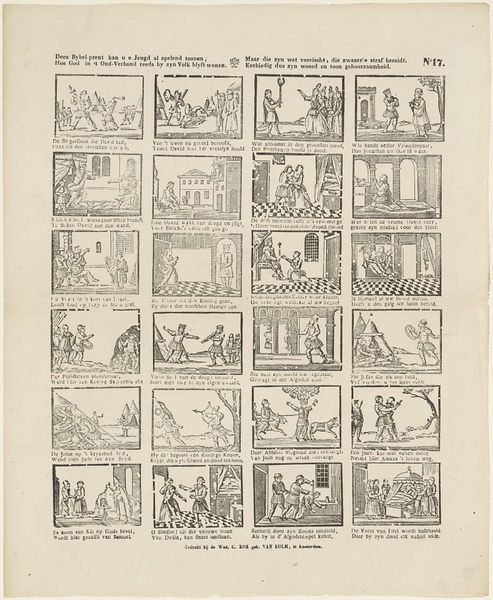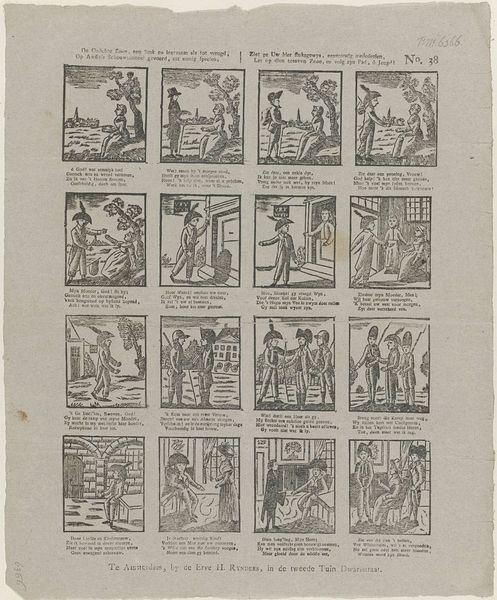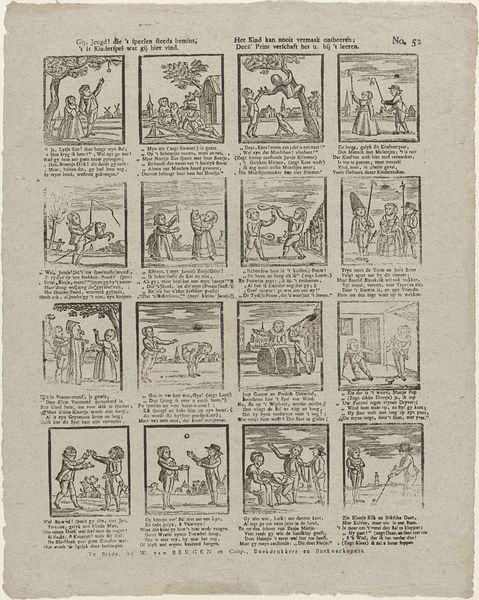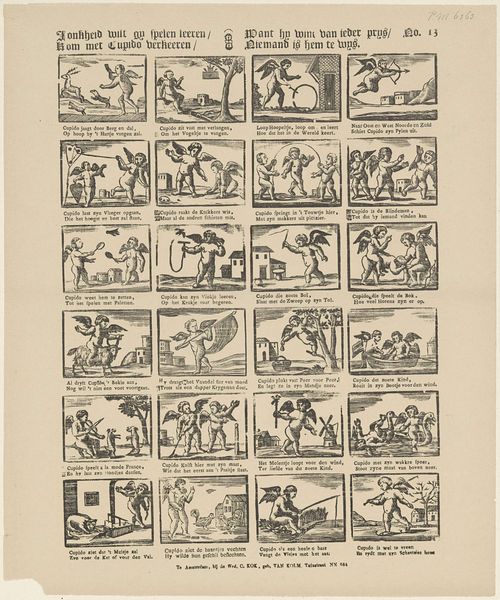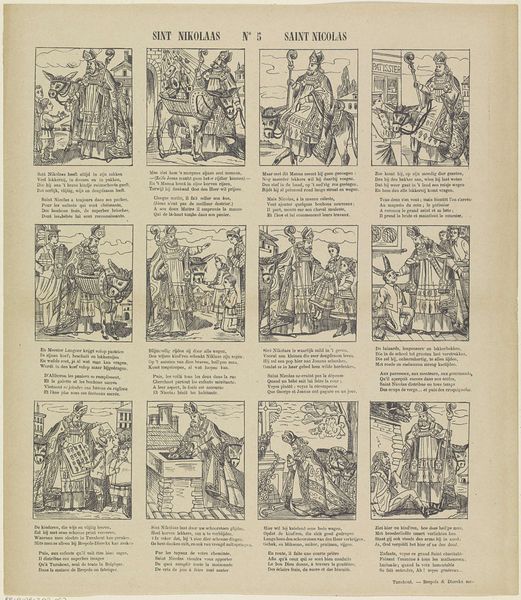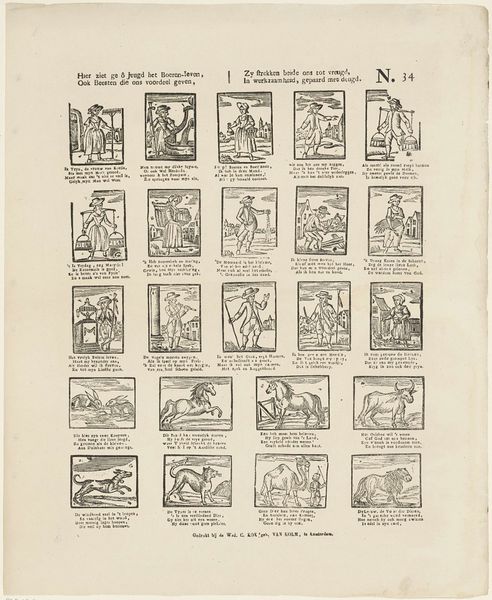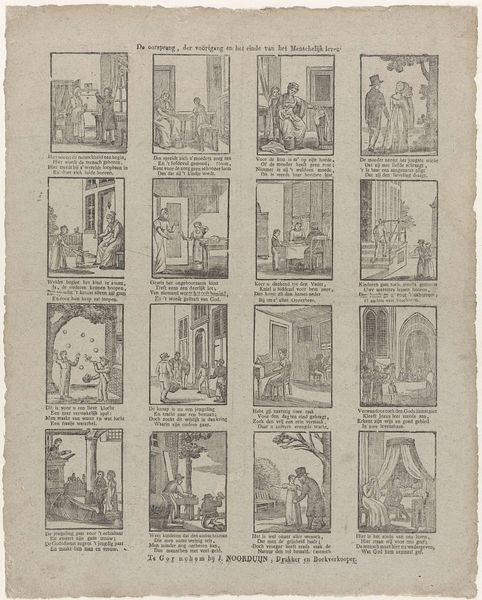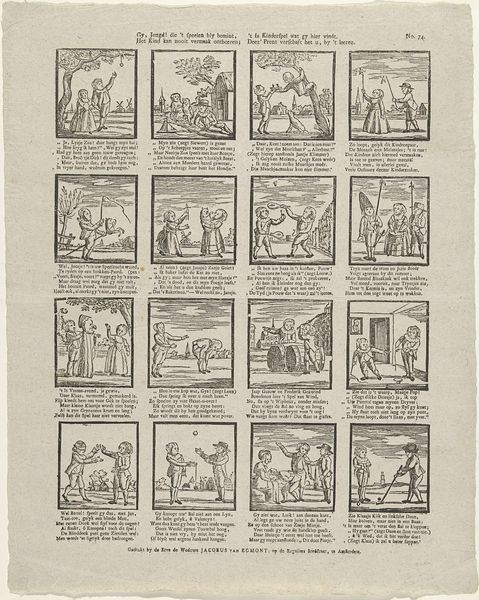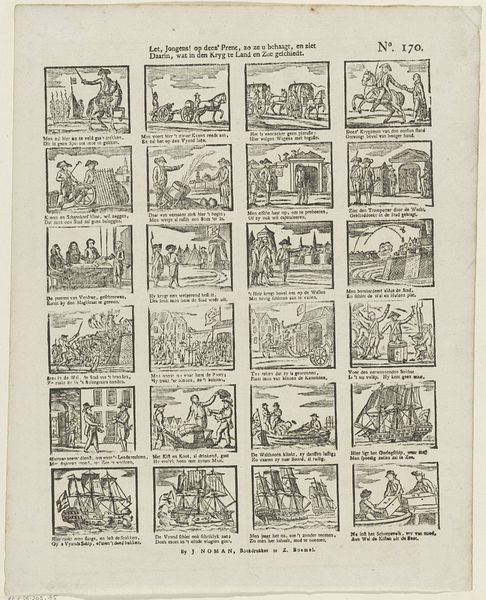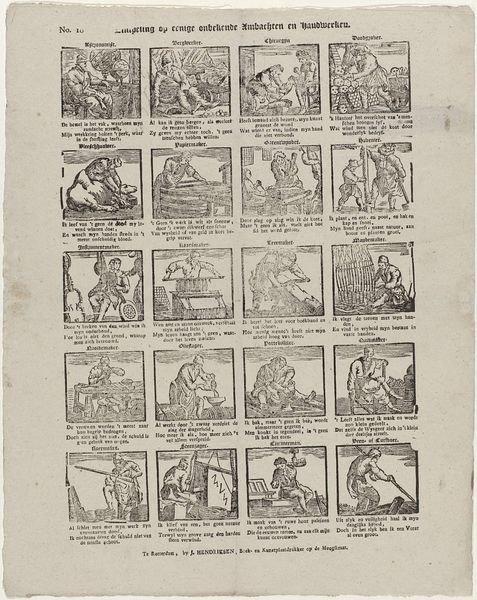
De onëchte zoon, een stuk zoo leerzaam als tot vreugd, / Op Amstels schouwtoneel gevoerd, tot nuttig spelen, / Ziet ge u hier stuksgewys, eenvoudig mededeelen, / Let op dien braven zoon, en volg zyn pad, ô jeugd! 1842 - 1866
0:00
0:00
print, etching
#
narrative-art
#
dutch-golden-age
# print
#
etching
#
comic
#
genre-painting
Dimensions: height 390 mm, width 322 mm
Copyright: Rijks Museum: Open Domain
This print, dating from around the late 1700s, was made by the widow C. Kok-van Kolm. It’s an etching, meaning the design was incised into a metal plate, likely copper, using acid to bite the lines. Look closely, and you’ll see the lines aren’t perfectly uniform; they have a handmade quality. This reflects the etcher’s skill and the time-intensive nature of the process. The print’s graphic style is simple, almost cartoonish, making it easily legible to a wide audience. Its content, a moralizing tale presented in sequential scenes, would have been very popular. Prints like this were a form of mass media, produced in multiples and sold relatively cheaply. They represent a burgeoning culture of consumerism and literacy, where moral lessons and entertainment could be disseminated widely. The labor involved, from the etcher’s hand to the printing press, speaks to a whole system of production that was rapidly transforming society. Appreciating this requires us to look beyond the image itself, and consider the print as a material object embedded in its time.
Comments
No comments
Be the first to comment and join the conversation on the ultimate creative platform.
